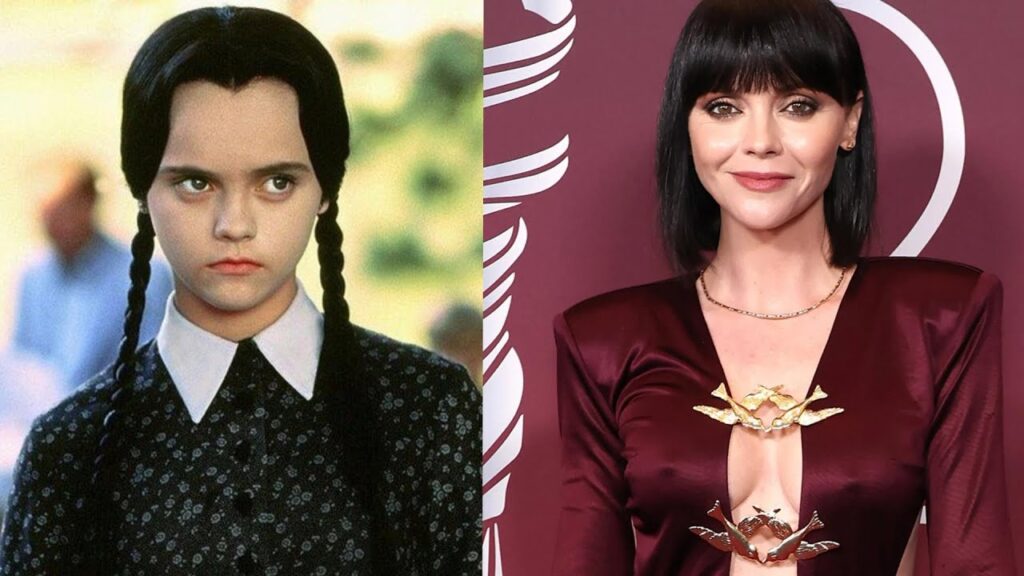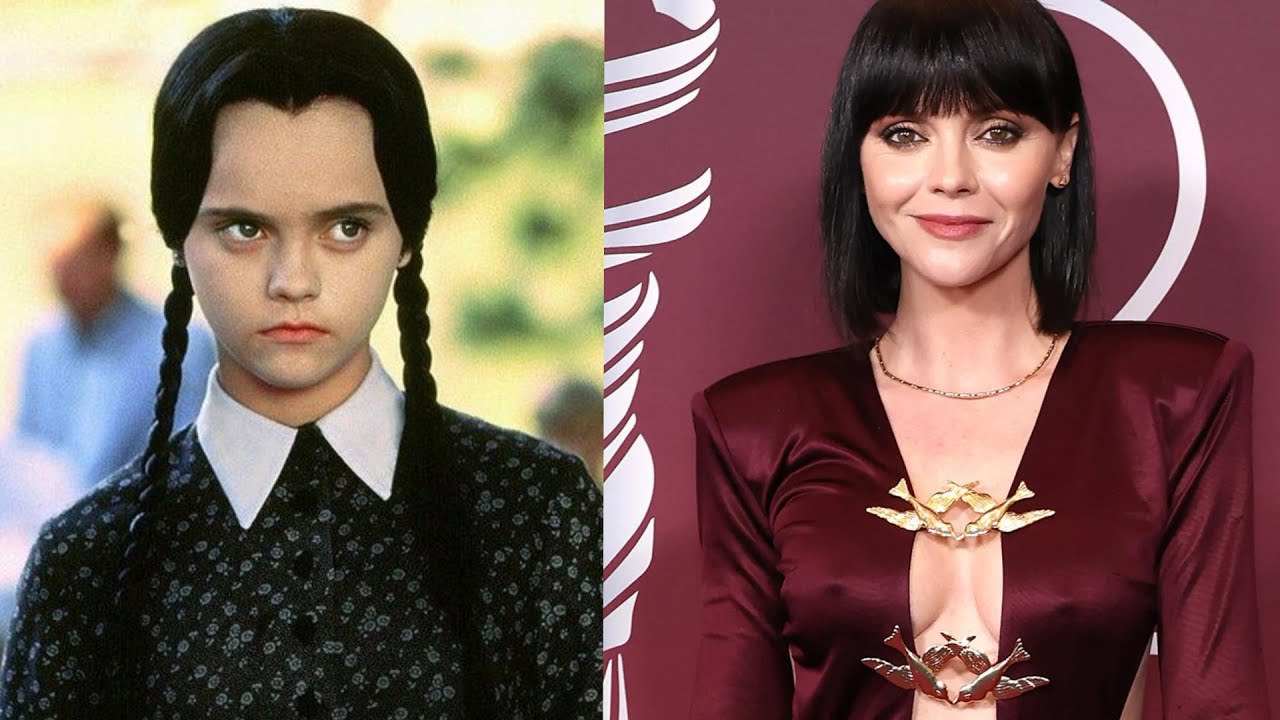
The Addams Family: Then and Now – A Look at the Evolution of America’s Spookiest Family
For decades, The Addams Family has captivated audiences with their macabre charm and unconventional lifestyle. From their humble beginnings as a cartoon to their various television, film, and stage adaptations, this iconic family has consistently evolved while retaining its core essence. This article explores The Addams Family then and now, examining how the characters and storylines have been reimagined and reinterpreted across different eras. We’ll delve into the origins of the family, trace their journey through various media, and analyze the enduring appeal that makes them a cultural phenomenon. Discover how The Addams Family has remained relevant and continues to resonate with audiences today. We will explore how the family has changed, and what aspects have stayed consistent.
The Genesis of a Ghoulish Delight
The Addams Family originated as a series of single-panel cartoons created by Charles Addams, which appeared in The New Yorker from 1938 until Addams’ death in 1988. These cartoons introduced the world to the darkly humorous and eccentric Addams family, a group of wealthy, aristocratic ghouls who were blissfully unaware of how bizarre their lifestyle appeared to outsiders. Key characters like Gomez, Morticia, Wednesday, Pugsley, Uncle Fester, and Lurch were initially nameless and only defined by their distinctive appearances and behaviors. Charles Addams’s work laid the foundation for all subsequent adaptations, establishing the family’s unique aesthetic and darkly comic sensibility.
Early Cartoons and Character Development
The initial cartoons focused on visual gags and morbid humor, showcasing the family’s peculiar habits and their interactions with the ‘normal’ world. It was through these early depictions that the core personalities of the characters began to emerge. Gomez, the passionate and wealthy patriarch, was depicted as a doting husband and father with a penchant for dangerous hobbies. Morticia, the elegant and morbid matriarch, exuded a serene and macabre aura. Wednesday, the deadpan daughter, and Pugsley, the mischievous son, engaged in morbid games and experiments. These early characterizations, although simple, were instrumental in defining the family’s identity.
The Television Era: A Spooky Sitcom is Born
In 1964, The Addams Family transitioned from the pages of The New Yorker to the small screen with the debut of the ABC sitcom. This television adaptation brought the characters to life in a new and engaging way, solidifying their place in popular culture. While the sitcom maintained the dark humor of the original cartoons, it also introduced a lighter, more comedic tone to appeal to a broader audience. The show ran for two seasons, comprising 64 episodes, and quickly became a beloved classic.
Key Differences and Similarities to the Original Cartoons
The television series expanded upon the characters’ backstories and relationships, providing them with names and more defined personalities. Gomez and Morticia’s passionate romance was emphasized, and their devotion to their children was a central theme. The sitcom also introduced new characters and storylines, further fleshing out the Addams family universe. Despite these changes, the television adaptation remained true to the spirit of the original cartoons, preserving the family’s macabre humor and unconventional lifestyle. One notable difference was the softening of some of the darker elements, making the show more palatable for a family audience. [See also: Comparison of Addams Family Adaptations].
The Addams Family Films: A Cinematic Revival
In the 1990s, The Addams Family experienced a cinematic revival with the release of two live-action films: The Addams Family (1991) and Addams Family Values (1993). These films brought a darker, more sophisticated tone to the franchise, appealing to both longtime fans and new audiences. Directed by Barry Sonnenfeld, the films were praised for their visual style, witty writing, and strong performances from the cast, particularly Anjelica Huston as Morticia and Raul Julia as Gomez.
Darker Themes and Updated Humor
The films embraced the darker aspects of the original cartoons, exploring themes of death, family, and societal norms with a sharper edge. The humor was more sophisticated, appealing to adult audiences while still retaining the family-friendly charm of the earlier adaptations. Addams Family Values, in particular, tackled themes of prejudice and conformity with a satirical bent. The films also updated the characters for a modern audience, giving them more complex motivations and backstories. These cinematic adaptations cemented The Addams Family‘s status as a timeless cultural icon.
The Addams Family Today: Animation and Beyond
In recent years, The Addams Family has continued to evolve with new adaptations and interpretations. Animated films, such as The Addams Family (2019) and The Addams Family 2 (2021), have introduced the family to a new generation of viewers. These films offer a fresh take on the classic characters, with updated animation styles and storylines that address contemporary themes. Additionally, the franchise has expanded into other media, including video games, comic books, and stage musicals, ensuring its continued relevance in popular culture.
The Enduring Appeal of the Addams Family
The Addams Family‘s enduring appeal lies in its ability to challenge societal norms and celebrate individuality. The family’s embrace of the macabre and their rejection of conventional values resonate with audiences who feel like outsiders. Their strong family bonds and unwavering support for each other provide a heartwarming counterpoint to their morbid lifestyle. The characters are also incredibly relatable, despite their eccentricities. Gomez and Morticia’s passionate love for each other, Wednesday’s sardonic wit, and Pugsley’s mischievous nature are all qualities that audiences can connect with. The Addams Family, then and now, continues to provide a space for audiences to explore themes of identity, acceptance, and the importance of family. [See also: The Psychology Behind The Addams Family’s Popularity].
Comparing The Addams Family Then and Now
Looking at The Addams Family then and now, it’s apparent that while the core essence of the family has remained consistent, the way they are presented and the themes explored have evolved to reflect changing societal values and audience preferences. The original cartoons were largely visual gags with dark humor. The television show toned down the darkness for a broader audience, while the 1990s films embraced the darker elements and introduced more sophisticated humor. The recent animated films cater to a younger audience with updated animation and contemporary themes.
What Has Stayed the Same
Despite the various adaptations, several key elements have remained consistent throughout The Addams Family‘s history. The characters’ core personalities, their macabre aesthetic, and their strong family bonds have been preserved across all media. Gomez and Morticia’s passionate love, Wednesday’s deadpan wit, and the family’s overall embrace of the unconventional are all hallmarks of the franchise. This consistency is crucial to the family’s enduring appeal, as it allows audiences to connect with the characters regardless of the specific adaptation. The core of The Addams Family, with their strong family values, will always resonate.
Looking to the Future
As The Addams Family continues to evolve, it is likely to see further adaptations and reinterpretations. The franchise’s ability to adapt to changing times while retaining its core essence ensures its continued relevance in popular culture. Whether it’s through new films, television shows, or other media, The Addams Family will undoubtedly continue to captivate audiences with their macabre charm and unconventional lifestyle. The future of The Addams Family looks bright, with possibilities for new stories and characters to explore within the existing universe. The enduring appeal of The Addams Family guarantees its continued presence in popular culture for generations to come. The family’s ability to adapt and evolve ensures that they will remain relevant and engaging for audiences of all ages. The continued success of The Addams Family is a testament to its timeless appeal and enduring relevance.
In conclusion, The Addams Family‘s journey from a series of single-panel cartoons to a multi-media franchise is a testament to its enduring appeal and cultural impact. By examining The Addams Family then and now, we can appreciate the evolution of these iconic characters and their continued relevance in a changing world. Whether you’re a longtime fan or a newcomer to the franchise, The Addams Family offers a unique and entertaining perspective on family, identity, and the importance of embracing individuality.

